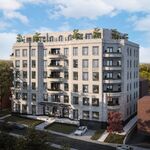I wasn't in Toronto when the Danforth was served by streetcars but I have a friend who is a senior and he tells me the Danforth was a lot nicer when a streetcar was there. Now there is a lot of cheque cashing stores and dollar stores because the streetcar is gone and the subway doesn't bring a lot of high end economic activity that the streetcar did to the eastern portion of the Danforth. The part of the Danforth that is still economically vibrant is around Broadview to Pape about. and then the types of business decline the further east I go. I am just hoping that Sheppard East LRT brings the type of economic activity that the old Danforth Streetcar had brought to the Danforth years ago, before I was born. Also my friend is a senior and does not feel safe on the eastern end of the Danforth at night because of all the prostitution and other types of activity on that stretch during the night. I imagine that a visible LRT on Sheppard might sort of police the neighborhood along Sheppard and keep illegal activity like that away.
Your friend is confusing cause and effect, or rather not seeing the actual cause. It wasn't the loss of the streetcar that killed sections of the Danforth, it was the fact that shopping malls came into being, and people who lived along the Danforth who used to walk to it and shop along it instead chose to drive to the nearest shopping mall. And because of the relatively low density in the area, the stores along it did not have enough clientel within walking distance to stay in operation. The removal of the streetcar and construction of the subway had very little to do with it.
Just look at areas along Queen Street, many of which suffered the exact same fate as areas of the Danforth. There's still a streetcar there, so why are they still 'cheque cashing stores and dollar stores' along much of Queen? It's only in the past 10 years or so that Queen West has regentrified itself into the Yuppyville that it is today, which again, has nothing to do with the streetcar being there.
My point is that there are many economic, social, and technological changes that happend during that time period. Boiling it down to streetcar/LRT = vibrant main street, subway = dead main street, is foolish, and ultimately incorrect.




